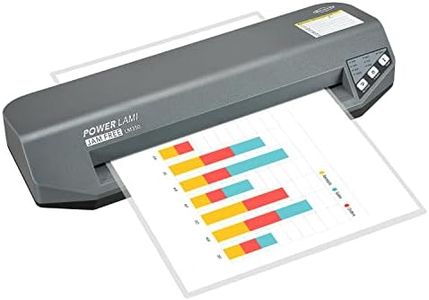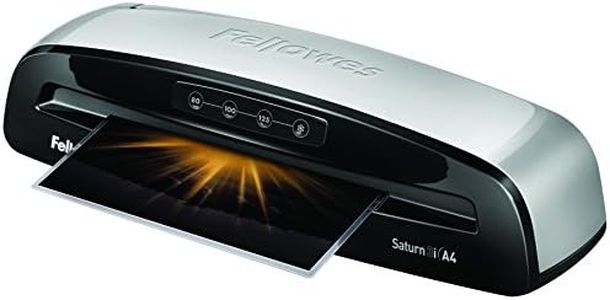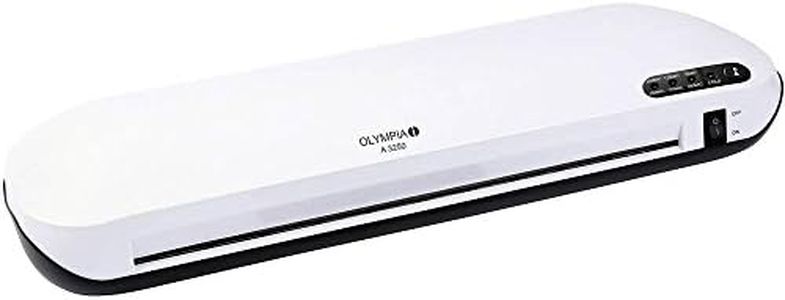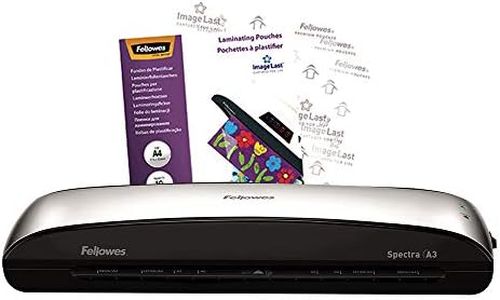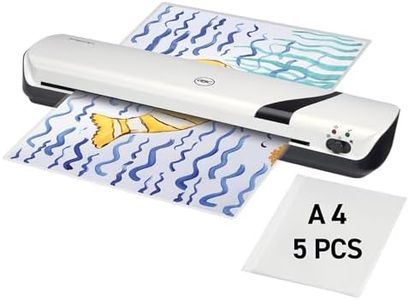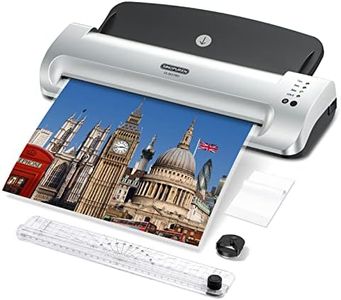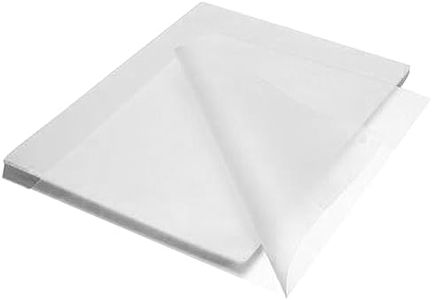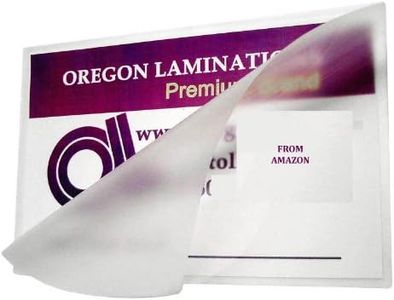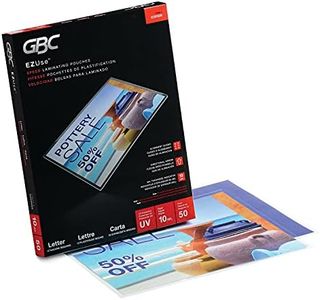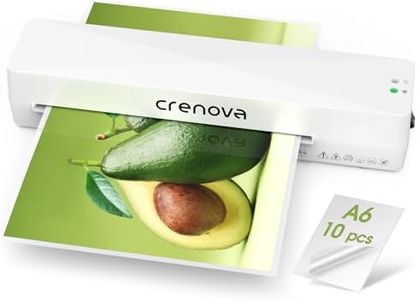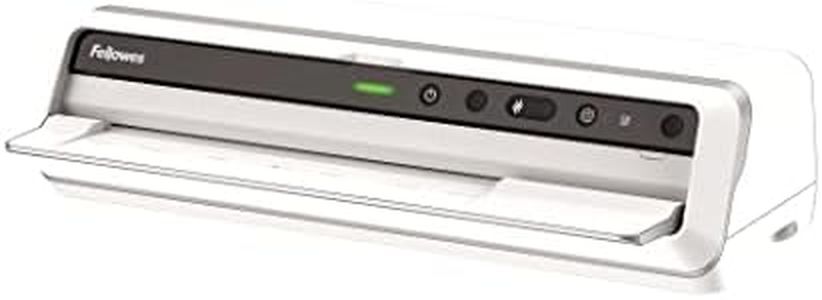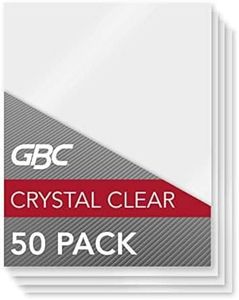We Use CookiesWe use cookies to enhance the security, performance,
functionality and for analytical and promotional activities. By continuing to browse this site you
are agreeing to our privacy policy
10 Best Laminator 10 Mil
From leading brands and best sellers available on the web.Buying Guide for the Best Laminator 10 Mil
Choosing the right laminator is important if you want to preserve documents, photos, or create durable teaching materials. The term '10 mil' refers to the thickness of lamination pouches the machine can handle, and there are other factors to consider as well. To make the best choice, focus on understanding the types of projects you’ll do most often, the materials you’ll work with, and the kind of finish and durability you need. With a little knowledge of the key specifications, you can easily find a laminator that fits your needs perfectly.Maximum Pouch Thickness (Mil Capacity)Pouch thickness, often measured in mil (thousandths of an inch), tells you how sturdy and protective your laminated document will be. The higher the mil number, like 10 mil, the thicker and more rigid your result will be. Laminators typically handle 3 mil (flexible for everyday use), 5 mil (sturdier for menus or cards), 7 mil, and up to 10 mil (very rigid, suitable for ID cards or signage). If you want the thickest and most protective lamination, look for a laminator that specifically supports 10 mil. If you’ll mostly laminate items like business cards or signs that need high durability, a higher mil capacity is best. For flexible sheets, lower mil options are enough.
Lamination WidthThe laminator’s maximum width determines the largest item you can laminate in one go. Common sizes include 9 inches (suitable for standard documents and photos), 12 inches (covers most letter and legal sizes), and larger. If you only plan to laminate standard office documents, a smaller width is fine. If you may ever want to laminate posters, legal-sized papers, or wider educational resources, consider a machine with a wider slot.
Warm-Up TimeLaminators need a few minutes to heat up before use, as they use heat to melt the adhesive in thermal pouches. Warm-up times can range from 1 to 5 minutes or more. If you’ll use it occasionally or don’t mind waiting, a longer warm-up is acceptable. If you anticipate frequently laminating several items in quick succession, look for a laminator with a short warm-up time for quicker workflow.
Laminating SpeedLaminating speed, usually measured in inches per minute, tells you how quickly the machine can process your items. Faster speeds are helpful when you have many documents to laminate at once, such as busy offices or classrooms. If you only laminate a few items at a time, speed is less critical. Match the laminating speed to the volume of work you expect.
Hot vs. Cold Lamination SupportSome laminators can handle both thermal (hot) and pressure-sensitive (cold) lamination. Hot lamination is most common and works with heat-activated pouches, while cold lamination is useful for heat-sensitive items like photos or certain inks. If you have special materials or want more versatility, choose a laminator that supports both methods. Otherwise, hot lamination is usually sufficient for most everyday purposes.
Jam Release MechanismA jam release or anti-jam function helps if a pouch gets stuck inside the machine. This feature lets you manually reverse or release the rollers to remove the jammed material. It’s especially helpful for beginners or busy users, reducing the risk of damage to your documents or the laminator itself. If you value convenience or haven’t used a laminator before, a jam release feature makes the process smoother.
